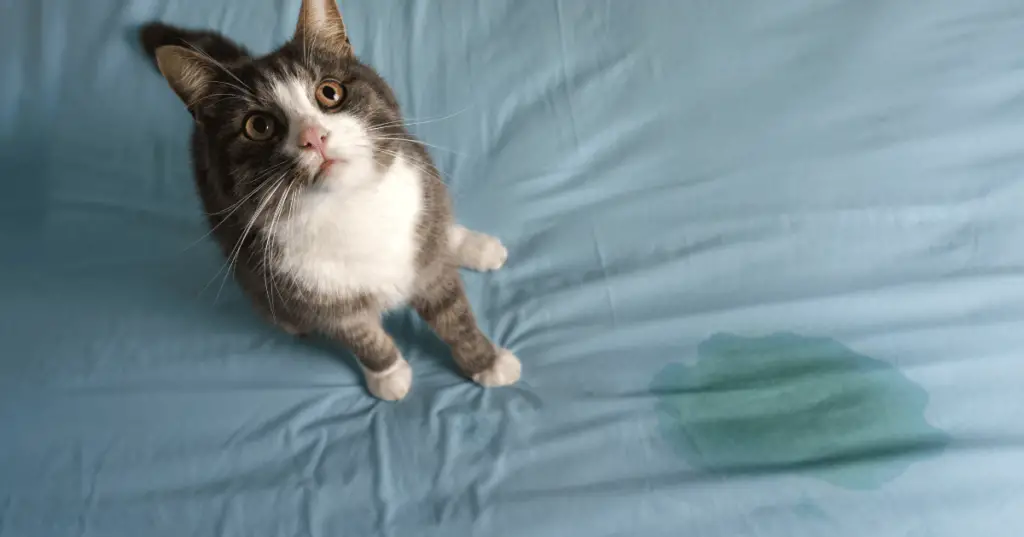WHAT TO DO IF YOUR CAT IS STUNG BY A BEE OR A WASP
If your beloved feline gets stung by a bee or wasp, you might notice swelling in their paw or face – common areas for such encounters in cats. Much like humans, they’ll likely experience localized pain and irritation, but these discomforts usually dissipate swiftly.
However, some cats might have allergies to the venom injected by these stings. In such cases, they could suffer severe reactions, potentially leading to fatal consequences if left untreated. Moreover, if your cat endures multiple stings or gets stung in sensitive areas like the throat or mouth, it’s imperative to seek urgent veterinary guidance. Your vet will likely advise immediate treatment to ensure your cat’s well-being.
Signs That Your Cat Has Been Stung by a Bee or Wasp
If your cat has encountered a bee or wasp, there are several signs to look out for that indicate they’ve been stung:
- Swelling: Check for swelling, particularly in the paw or face, which are common areas for bee or wasp stings in cats.
- Pain or Discomfort: Your cat may display signs of pain or discomfort, such as limping or licking excessively at the sting site.
- Vocalization: Some cats may vocalize or meow more than usual due to the pain or discomfort caused by the sting.
- Hiding: In some cases, cats may seek out hiding spots or become withdrawn after being stung.
- Scratching or Rubbing: Your cat may scratch or rub the affected area in an attempt to alleviate the discomfort.
- Difficulty Eating or Drinking: If the sting occurs in or around the mouth or throat, your cat may have difficulty eating or drinking.
- Lethargy: In severe cases, cats may become lethargic or weak due to the effects of the sting.
If you notice any of these signs in your cat, it’s essential to take prompt action to provide them with the necessary care and treatment.
Bee Sting Treatment for Cats
If your cat has been stung by a bee, swift action is crucial to minimize discomfort and potential complications. Here’s what you should do:
1. Remove the Stinger:
If the stinger is still lodged in the wound, it needs to be removed immediately. A bee’s stinger can continue injecting venom for up to three minutes after the sting. Gently use the edge of a credit card to scrape the stinger out. Avoid using tweezers or your fingers, as this may rupture the venom sac and worsen the situation.
2. Monitor for Severe Reactions:
Keep a close eye on your cat for any signs of a severe allergic reaction. Even if the reaction seems mild and localized, it’s essential to contact your veterinarian immediately. Your vet may recommend administering an antihistamine medication like diphenhydramine to alleviate symptoms and slow down the body’s reaction to the venom.
3. Consult with Your Vet:
While it might be tempting to administer over-the-counter medication, such as diphenhydramine, without veterinary guidance, it’s crucial to consult your vet first. Some medications may contain ingredients harmful to cats, and your vet can advise you on the safest medication and proper dosage for your cat’s condition.
4. Provide Home Care:
For mild swelling, you can apply a cold compress or wrap the affected area with a cool washcloth. However, avoid giving your cat over-the-counter pain medication, as these can be toxic to felines. If your cat appears to be in severe pain or shows signs of an allergic reaction, seek veterinary attention immediately.
5. Prevent Further Aggravation:
Encourage your cat to rest and prevent them from bothering the sting site. If the sting is on their paw, try to get them to lie down to avoid further aggravation. If it’s on their face, discourage them from pawing at the area. Additional irritation can lead to increased swelling and discomfort, so keeping your cat calm and allowing them to rest is essential.
By following these steps and seeking prompt veterinary care when necessary, you can help your cat recover from a bee sting safely and comfortably.
Preventing Cats from Getting Stung by Bees and Wasps
Preventing cats from getting stung by bees and wasps is important for keeping them safe and happy. A simple way to do this is by keeping cats indoors, especially when bees and wasps are most active, like on hot summer days. Make sure doors and windows are closed tightly or have screens to stop bees and wasps from coming inside.
Keeping the yard neat by mowing the lawn and clearing away clutter can also help reduce places where bees and wasps might build nests.
Before letting cats outside, check the area for any signs of bees or wasps. Avoid planting strongly scented flowers that attract bees and wasps, and consider using plants like mint or citronella to keep them away. Covering food and drinks when dining outdoors and sealing trash cans tightly can also help avoid attracting bees and wasps. Teach everyone in the family, especially kids, about staying away from bees and wasps and what to do if they see one.
When working outside in areas where bees and wasps are, wear long clothes and gloves for protection. By following these simple steps, you can help keep your cat safe from bee and wasp stings.
Conclusion
In summary, it’s important to know the signs of bee or wasp stings in cats and what to do if your furry friend gets stung. If you notice any swelling, pain, or other unusual behavior, act fast. Remove any stingers, watch for serious reactions, and call your vet if needed. These steps can help your cat feel better quickly.
To avoid stings in the first place, keep your cat indoors when bees and wasps are busy, and make sure your home is secure. Keep your yard tidy and avoid planting strong-smelling flowers that attract bees and wasps. Cover food and drinks outside, and teach your family to stay away from these insects. Wearing protective clothing when working outside can also help.
By following these tips and being prepared, you can keep your cat safe and comfortable, whether they’re indoors or out.






